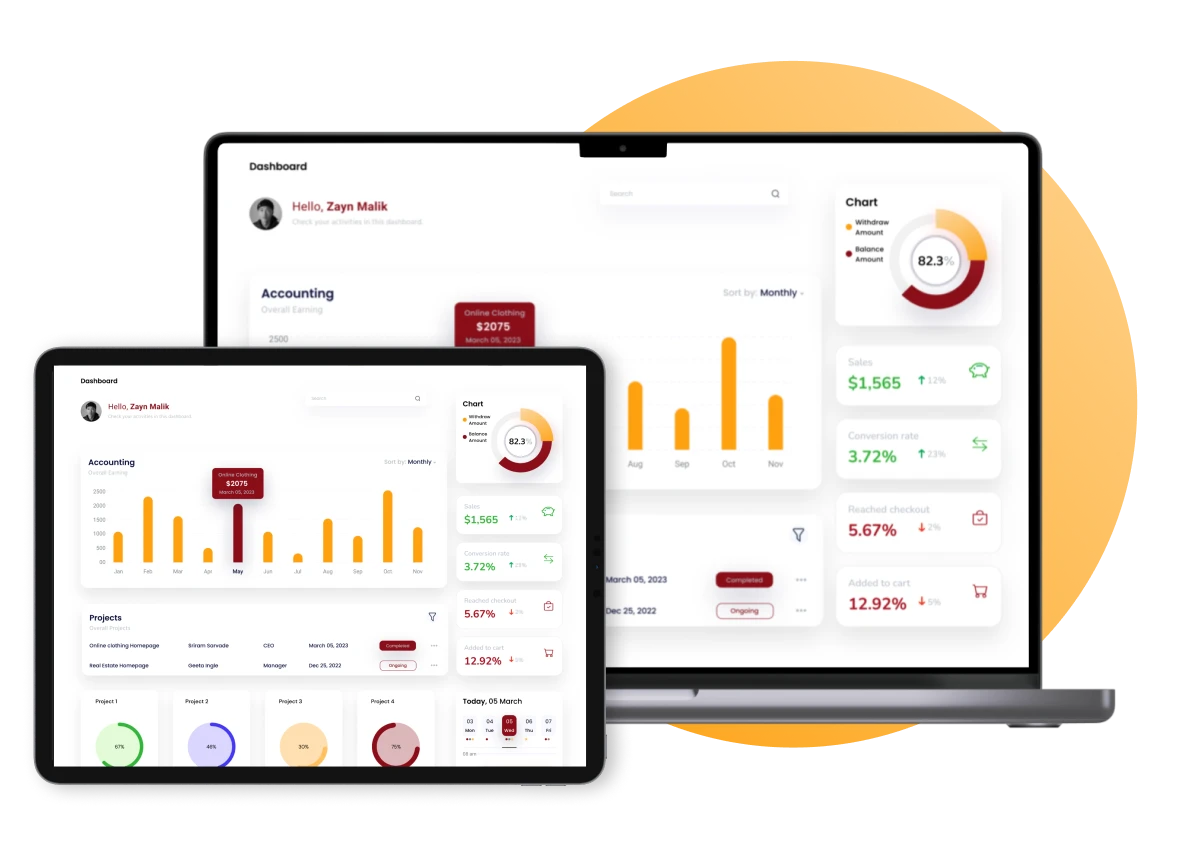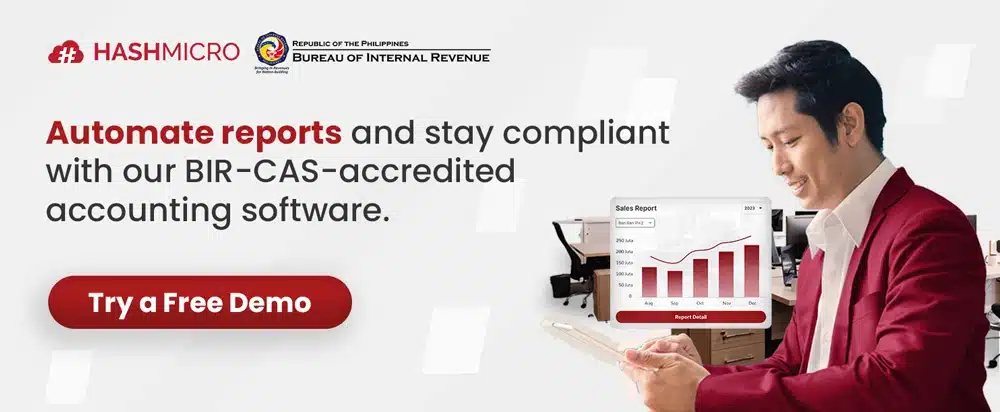Are your financial records telling the whole truth? In a fast-paced business environment, even the smallest error in your accounts can snowball into major financial headaches, from cash flow problems to compliance issues. For Filipino business owners, these risks are especially concerning, as accurate records are key to making sound business decisions and staying competitive.
Account reconciliation is more than just a regulatory checkbox—it’s the backbone of financial integrity and business growth. In this guide, you’ll learn not only what account reconciliation is but also why it’s crucial for your business’s success, how to implement it effectively, and the best practices to ensure you stay on track.
Key Takeaways
|
Table of Contents

What Is Account Reconciliation?
Account reconciliation is the process of comparing two sets of records—usually the internal financial records of your business and external records like bank statements—to ensure that the figures match. This practice helps identify discrepancies, errors, or fraudulent transactions that may have occurred. For example, reconciling a business’s bank statement with its cash ledger allows you to verify whether the recorded transactions align with the actual money in the account.
The importance of account reconciliation cannot be overstated. It’s a foundational practice that helps maintain the accuracy of your financial data, ensuring that your records reflect the true financial position of your business. Without regular reconciliation, your financial statements could contain errors, leading to poor decision-making, potential compliance issues, and even financial losses.
Why Is Account Reconciliation Important?
When Should Account Reconciliation Be Done?
The frequency of account reconciliation depends on the type of accounts being reconciled. For high-activity accounts like bank statements, daily or weekly reconciliation is recommended to promptly catch and resolve discrepancies. On the other hand, reconciliations for accounts payable, accounts receivable, and other internal ledgers might be done monthly.
Regular reconciliation is essential because it prevents discrepancies from accumulating over time. The longer you wait, the harder it becomes to identify and correct errors. Frequent reconciliation also provides a clearer picture of your financial position, allowing you to make timely adjustments to avoid cash flow issues, missed payments, or compliance risks.
Types of Account Reconciliation
Account reconciliation comes in various forms, each focusing on specific aspects of your business’s financial activities. Key types include:
- Cash Accounts and Bank Statements: Comparing your internal cash records with bank statements to ensure consistency. This is one of the most common and essential reconciliations.
- Accounts Receivable and Payable: Ensuring that the amounts owed to and by the business are accurately recorded and settled.
- Inventory: Verifying that your inventory records match the actual stock levels, reduces the risk of theft, loss, or mismanagement.
- Fixed Assets and Accumulated Depreciation: Reconciliation helps confirm that your fixed assets and their depreciation are correctly accounted for in your financial statements.
- Liabilities and Shareholders’ Equity: Matching liabilities and equity records with the corresponding ledgers ensures an accurate reflection of your business’s financial obligations.
Each type of reconciliation plays a unique role in ensuring the completeness and accuracy of your financial data, making it easier to manage resources effectively and stay compliant with regulations.
How Does Account Reconciliation Work?
The account reconciliation process typically involves a few key steps:
- Gathering Records: Start by collecting both internal records (like your general ledger) and external statements (like bank statements).
- Comparison: Compare each transaction recorded in your books with the corresponding transaction in the external records.
- Identifying Discrepancies: Spot any differences between the records, such as missing entries, incorrect amounts, or unrecorded transactions.
- Resolving Discrepancies: Investigate the cause of any discrepancies and make the necessary corrections.
- Finalizing the Reconciliation: After resolving all issues, update your financial records to reflect the accurate information.
Tools for account reconciliation range from manual spreadsheets to automated accounting software. While manual methods can be sufficient for small businesses, automated solutions significantly enhance efficiency and reduce human error, making them ideal for growing enterprises.
Common Discrepancies in Account Reconciliation
Discrepancies during reconciliation are common and can stem from various sources. Some typical issues include:
- Timing Differences: Transactions recorded in your internal system may not yet be reflected in external statements due to delays in processing.
- Data Entry Errors: Mistakes like duplicate entries, transposed digits, or incorrect amounts can cause discrepancies.
- Uncleared Checks or Deposits: Payments that haven’t cleared yet or deposits still pending can lead to differences between your records and bank statements.
- Bank Fees and Charges: Often, bank fees, service charges, or interest may be overlooked and not recorded in your financial books.
Identifying and resolving these discrepancies promptly is crucial to maintaining accurate records. Implementing controls, such as double-checking entries and conducting periodic audits, can help reduce the likelihood of errors.
Risks of Not Reconciling Accounts
Failing to reconcile accounts regularly can lead to severe financial consequences for your business. Unreconciled discrepancies can snowball into larger issues, such as incorrect tax filings that result in penalties or fines. Moreover, missed errors in financial statements could allow unauthorized transactions to go undetected, increasing the risk of fraud. Keeping accurate records is also crucial for compliance with financial regulations, as neglecting this could lead to legal complications.
No matter how many accounting system software options are available, HashMicro’s accounting software goes the extra mile to reduce these risks. Its automated reconciliation features and real-time updates ensure you stay on top of your financial records with minimal effort, providing peace of mind while maintaining compliance in a relaxed yet professional manner.
Best Practices for Account Reconciliation
To maintain accuracy and efficiency in account reconciliation, consider these best practices:
- Establish a Routine: Regularly schedule reconciliations to stay on top of your financial records. This could be daily for high-activity accounts or monthly for others.
- Use Technology: Automating the reconciliation process with accounting software can save time, reduce errors, and provide real-time insights into your financial health.
- Documentation: Always keep detailed records of reconciliations, including the date, accounts reconciled, and any adjustments made.
- Segregation of Duties: Divide reconciliation tasks among different employees to reduce the risk of fraud and improve accuracy.
- Periodic Audits: Conducting regular internal audits ensures that your reconciliation processes are effective and identifies areas for improvement.
Implementing these best practices can help streamline your reconciliation processes, making them more efficient and reliable.
Manual vs. Automated Reconciliation
The debate between manual and automated reconciliation boils down to accuracy, speed, and scalability. Manual reconciliation involves comparing records by hand, which can be time-consuming and error-prone. While it might work for small businesses with limited transactions, this method quickly becomes inefficient as your business grows.
Automated reconciliation, powered by accounting automation, uses specialized software to automatically match records, flag discrepancies, and even suggest resolutions. Although automation requires an upfront investment, the benefits far outweigh the costs, offering increased accuracy, time savings, and scalability for growing businesses.
For those looking to streamline operations, solutions like HashMicro’s accounting software offer robust automation features that make financial reconciliation faster and more reliable, freeing up time for strategic decision-making.
Also read: Difference Between Debits and Credits in Accounting
Automate Account Reconciliation with HashMicro’s Accounting Software
Managing account reconciliation manually can be time-consuming, error-prone, and a drain on your resources. With HashMicro’s Accounting Software, you can automate this critical process, ensuring your financial records are always accurate and up to date. By leveraging advanced automation features, businesses can not only streamline their reconciliation process but also gain real-time insights into their financial health.
Why Choose HashMicro?
- Fully customizable accounting solutions tailored to your business needs.
- Seamless integration with existing financial systems for real-time data.
- Automated reconciliation processes that minimize errors and save time.
- User-friendly interface designed for efficient financial management.
- Comprehensive reporting and analytics for informed decision-making.
Investing in HashMicro Accounting Software means less time spent on manual reconciliation and more time focused on growing your business.
With advanced account reconciliation software and intuitive design, you can streamline financial processes, reduce risk, and maintain full control over your business’s financial operations.
Conclusion
In conclusion, account reconciliation is an indispensable part of any business, ensuring accuracy in your financial records, reducing the risk of fraud, and maintaining compliance with regulatory requirements. For Filipino business owners, adopting a consistent reconciliation process—be it manual or automated—is crucial for maintaining financial health and making informed decisions that drive growth. Leveraging technology, like automated accounting software, can streamline your reconciliation process, allowing you to focus more on expanding your business.
With HashMicro’s Accounting Software, you get a solution that simplifies account reconciliation while providing real-time insights and comprehensive financial management. Designed to meet your unique needs, HashMicro offers customizable and user-friendly tools that make reconciliation faster, more accurate, and hassle-free.
Ready to see how HashMicro can transform your financial management? Join our free demo today and discover the difference automation can make for your business!
Frequently Asked Questions
-
What are the basic steps in account reconciliation?
The basic steps in account reconciliation include gathering financial records, comparing transactions in your accounts to corresponding records (like bank statements), identifying discrepancies, and investigating and resolving those differences. Finally, make adjustments in your financial records to ensure they match the actual balances.
-
What are the three types of reconciliation?
The three types of reconciliation are bank reconciliation, customer reconciliation, and vendor reconciliation. Bank reconciliation compares bank statements with internal records. Customer reconciliation ensures that sales and payments match client records. Vendor reconciliation checks purchase transactions against supplier statements to confirm accuracy.
-
What is the purpose of reconciliation?
The purpose of reconciliation is to ensure accuracy in financial records by comparing internal accounts with external statements, identifying discrepancies, and correcting errors. Reconciliation helps prevent fraud, supports compliance with regulations, and provides a clear picture of your financial health, aiding in better decision-making.










































